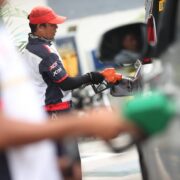Metro Manila motorists spent nearly ‘5 days’ stuck in traffic in 2023
Metro Manila had the worst traffic congestion among metropolises worldwide in 2023, according to the latest study by TomTom, a Dutch multinational company that provides navigation and traffic data.
If based on time spent to cover 10 kilometers, motorists in the country’s capital region spent an average of 25 minutes and 30 seconds to navigate that distance last year, 50 seconds longer than in 2022.
This translated to a congestion level of 52 percent, which meant that the drivers spent more than half of their time in traffic than they would in normal conditions.
In terms of time “lost” due to heavy traffic for the whole year, Metro Manila motorists endured a cumulative 117 hours—or almost 5 days—stuck on the road in 2023. Their average speed during rush hour was only 19 km per hour.
Ranking per city
The 2023 TomTom Traffic Index has a separate ranking per city. Here, the City of Manila was considered the third most congested in Asia and the ninth most congested worldwide.
The average travel time to cover 10 km in Manila was 27 minutes and 20 seconds, which was 20 seconds longer than in 2022. The city’s congestion level was 46 percent, or 4 percentage points higher than in the previous year.Time lost due to traffic in Manila was 105 hours per year, or 4.4 days, while the average speed during rush hour is 15.5 kph.TomTom, which posted the 2023 index on its website on Jan. 10, uses anonymized data from drivers around the world who collectively traveled 551 billion km in 2023 to measure how fast and how long it takes to drive in the whole road network of a big city (“metro”) or a small area around the center (“city center”), which includes highways and other roads.
The latest study covered 387 cities around the world, using data from over 600 million devices in cars and smartphones.
Bottom 5
After Metro Manila, the next four worst metropolises were Lima, Peru; Bengaluru, India; Sapporo, Japan; and Bogota, Colombia.
Among individual Asian cities, Bengaluru was the worst, followed by Pune also in India; Manila; Taichung, Taiwan; and Sapporo, Japan.
According to the TomTom index, most cities worldwide saw a drop in the average speed of vehicles in 2023. Only 82 cities maintained their speed levels from the previous year, while 77 cities improved their speed and reduced travel times.
“With more than half of the world’s population living in urban areas, traffic congestion and its economic, ecological and health consequences have become a problem that needs to be urgently addressed,” said Ralf-Peter Schäfer, TomTom’s vice president for traffic.
“Planning the future of urban areas is essential to ongoing traffic management. Large urban areas are harnessing Big Data to plan infrastructure and development that will alleviate traffic congestion. Analysis of historical traffic data can help growing cities map more efficient road systems and plan better zoning using location intelligence. Effective implementation of planning measures, such as the implementation of LEZs (low emission zones) to reduce air pollution, will benefit from data from connected cars,” Schäfer added. —Russel P. Loreto INQ















